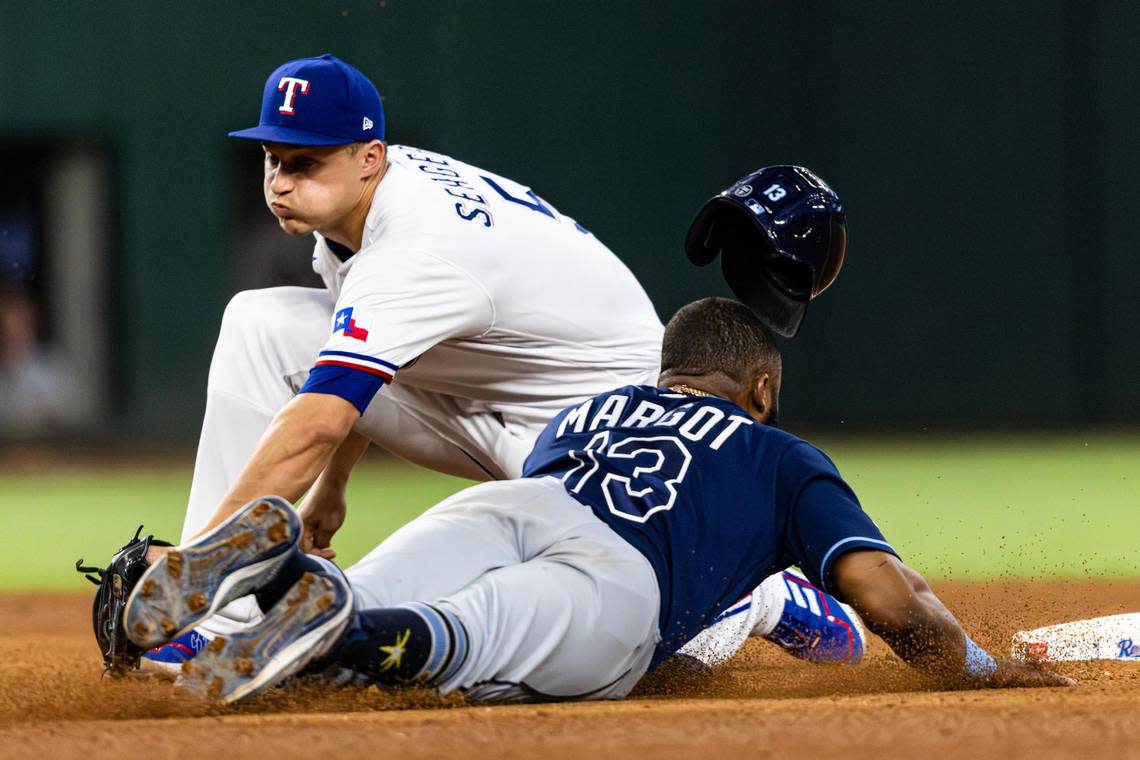Only took 20 years for the Texas Rangers to hit on the big contract they gave A-Rod

- Oops!Something went wrong.Please try again later.
On Sunday afternoon Houston was aglow with its charming endless traffic, and dormant downtown save for the immediate area around Garbage Can Alley, aka Enron Field.
With all due respect to Space City and its now suddenly big group of loyal Astros fans, it’s going to be a long time before we move on from the ‘garbage can’ theme. Some horses are must be ridden until long after they are dead.
Game 1 of the 2023 American League Championship Series between the Rangers and Astros for the Shinerbock Texas State Title brought to you by Whataburger was played Sunday night in Houston; while the rest of America may yawn this is something all of us who live here need.
“Not many secrets between us,” Rangers reliever Will Smith said before Game 1. “It’s exciting for us. We’re trying to win them as fast as possible. ... It is what it is. We’re three hours from each other. They’ve owned this decision for a while now. We obviously want to come in and not want to be the little brother any more.”
(Three hours? Impressive driving skills).
The Astros arrived at this familiar destination through a series of well-documented shrewd, pioneering front office decisions, and the help of some HDTVs and a garbage can; the Rangers reached this point by playing owner Ray Davis’ hole card: Cash.
The path once originally preferred by former team owner Tom Hicks didn’t work out when he owned the team, but money-whipping top talent has been the desperately needed long ball this franchise needed to save itself from years and years of dud personnel decisions.
Much like in 2000, when the Rangers tried the money route by handing free agent shortstop Alex Rodriguez a record contract, the team did the same thing 20 years later by giving another shortstop more money than a fleet of former Arthur Andersen employees could launder.
In 2000, the Rangers gave A-Rod a record 10-years and $252 million. In today’s dollars, that would be $450 million. In the winter of 2021, the Rangers gave shortstop Corey Seager a 10-year, $325 million deal.
(Sure, that’s a lot of money, but think of the taxes.)
By all accounts, since he signed with the Rangers Seager does his own thing, and isn’t always easy to find.
Seager gives off hard core Jeff Kent vibes, the former long time All-Star and borderline Hall of Famer who was both a great player, and preferred isolationist.
Some guys are better to be left alone; as long as they’re prepared, produce, and aren’t a problem, who cares? Doesn’t make him a bad guy. Doesn’t make him a bad teammate.
It makes him a classic Scott Boras prototype free agent acquisition; I’m going to not be a problem, while putting up the numbers you paid me to put up; anything other than that needs to include more zeroes.
A-Rod wanted to be a de facto general manager, full-time A-list celebrity, and Hicks gave him access to the Bat Phone. Seager looks happy to hit and go home, and the way he projects himself he would rather eat a bowl of black tar than do an interview.
Not coincidentally both A-Rod and Seager are represented by the same man, Boras, who continues to fly on his broom all over North America’s major league cities to find another sucker to give his preferred client top dollar.
The similarities between Seager and A-Rod are everywhere with one major distinction: The Rangers with Seager win whereas the Rangers with A-Rod never did.
A-Rod never wanted to be with the Rangers, and he signed with the club only because Hicks was willing to go miles overboard on both the total value and length of the contract. A-Rod produced, and he was an All-Star every year he was with the Rangers, and won the American League MVP in 2003.
Hicks’ model was that the team would win, the Ballpark in Arlington would be packed, and he could use the revenue to sign even more players. In A-Rod’s three seasons with the team, they won 73, 72, and 71 games in succession.
The Ballpark was seldom packed, the contract morphed into an invisible noose as Hicks’ business finances were a mess, and A-Rod was traded to the New York Yankees after 2004.
Hicks vowed to never try that route again, and his commitment to building the team through drafts and the farm system eventually yielded the team’s best results ever with consecutive World Series teams.
More than 20 years later, after so much losing, Rangers primary owner Ray Davis approved the “Hicks Method.” It’s working.
It’s working because the big contract players are producing, namely Seager. He’s been an All-Star in each of his two seasons with the Rangers, and had he not suffered injuries in 2023 he would be a top candidate to be the league MVP.
In only 119 games this season, Seager hit .327 with 42 doubles, 33 home runs, 96 RBI, and brilliant defense.
Like A-Rod, Seager is doing what he is handsomely paid to do.
Unlike A-Rod, Seager’s team is actually winning.

